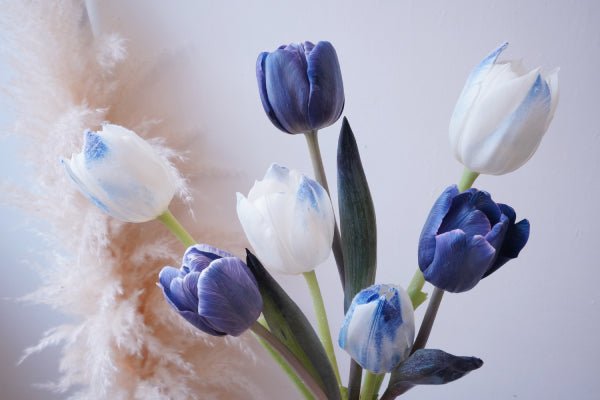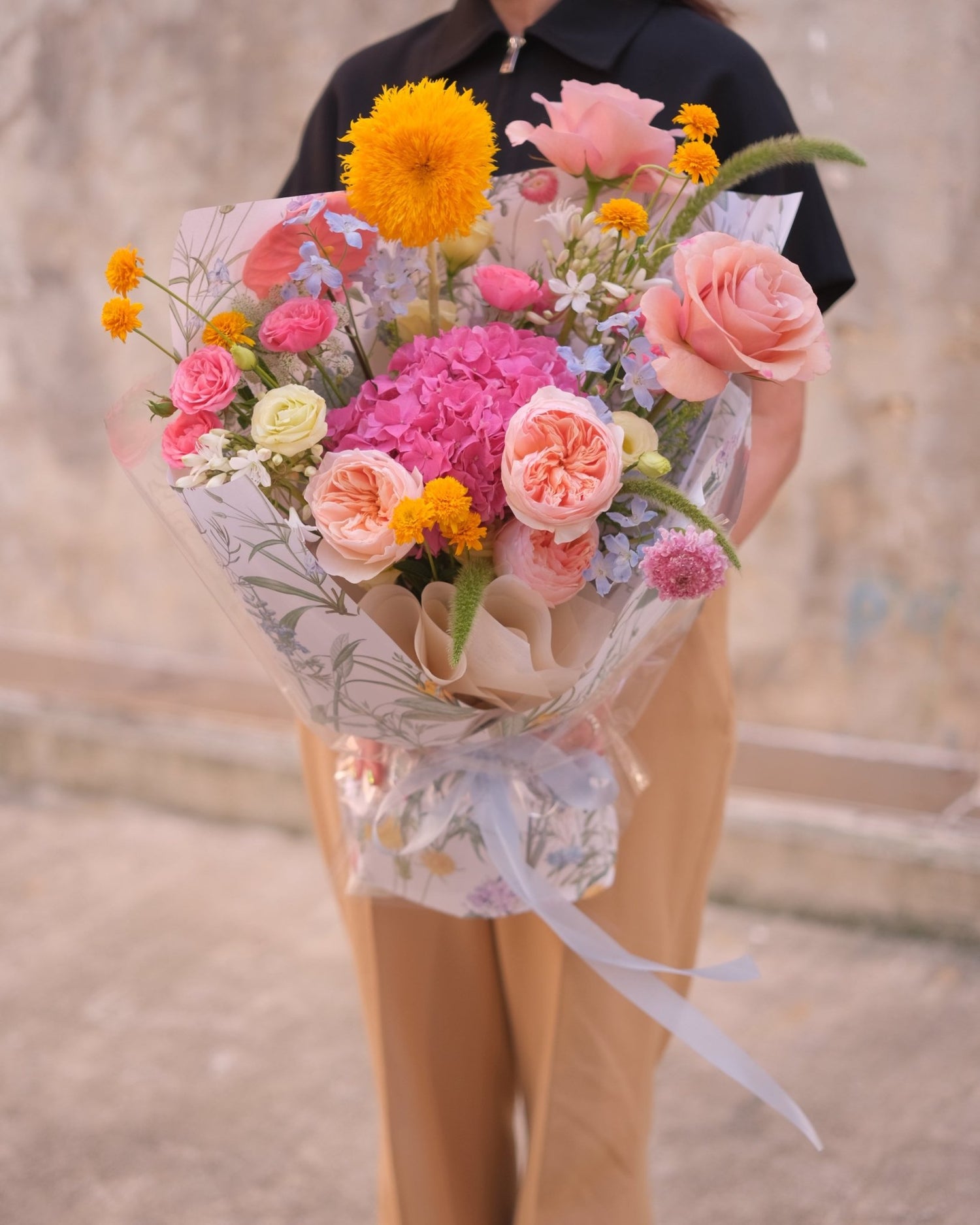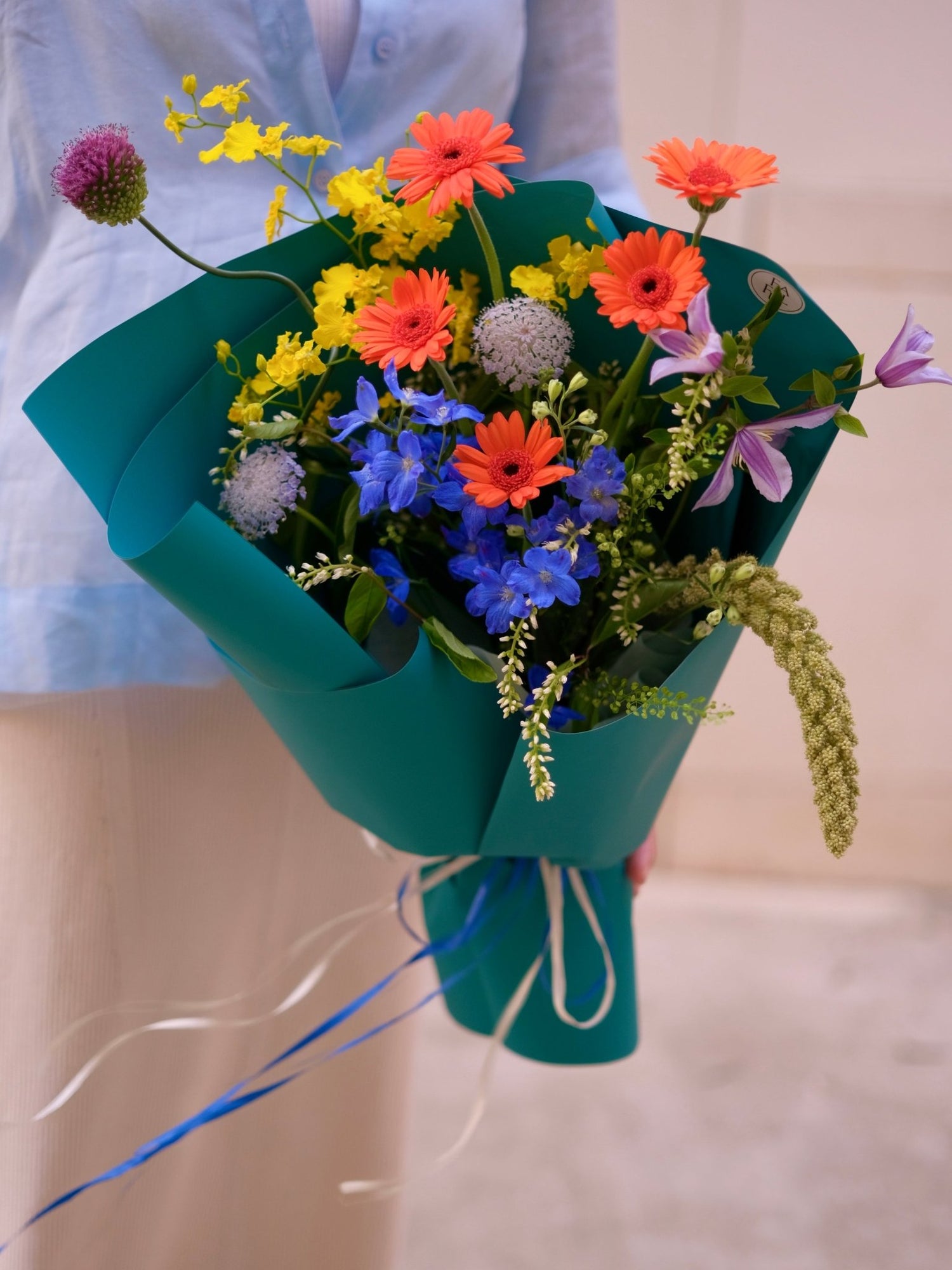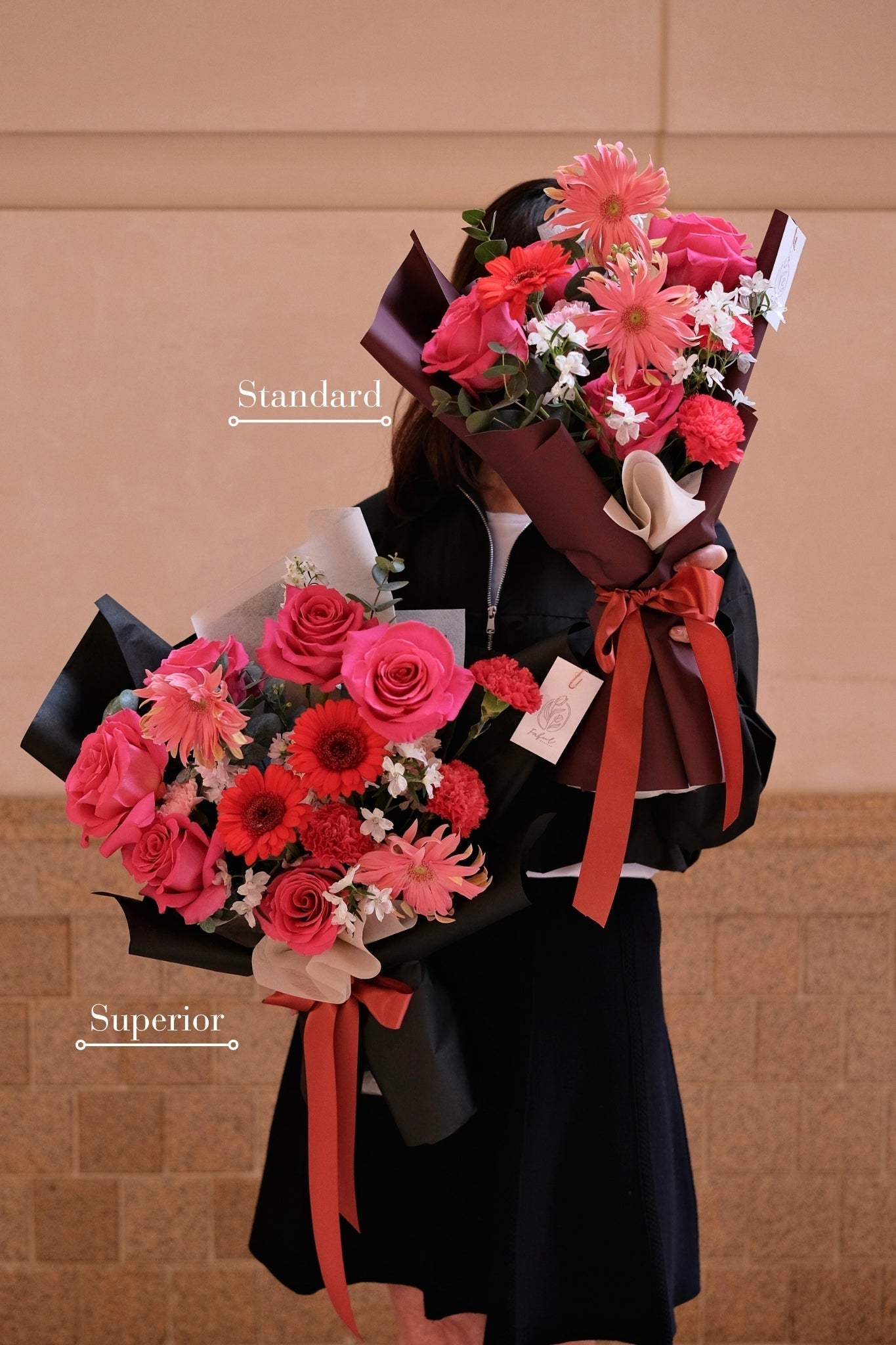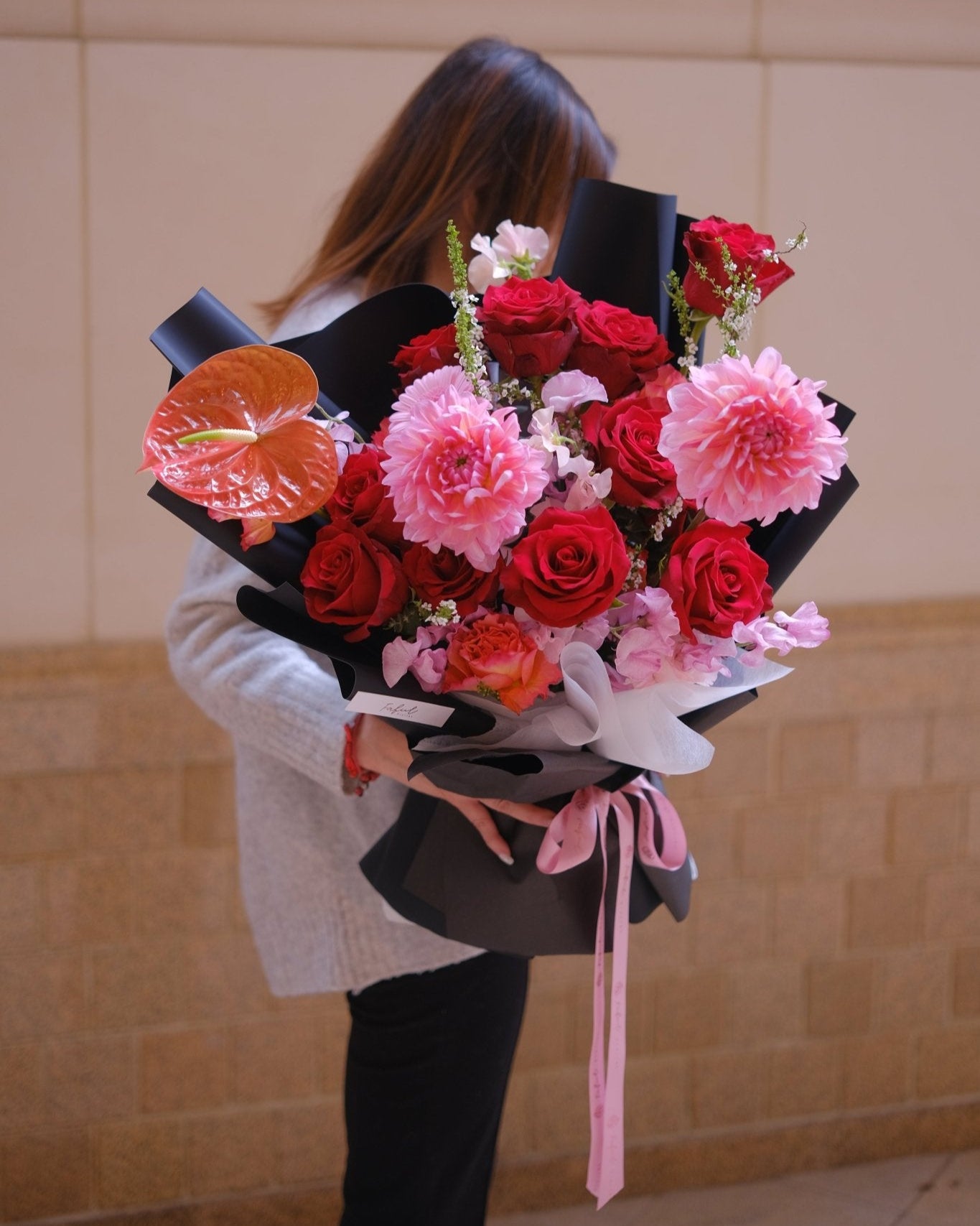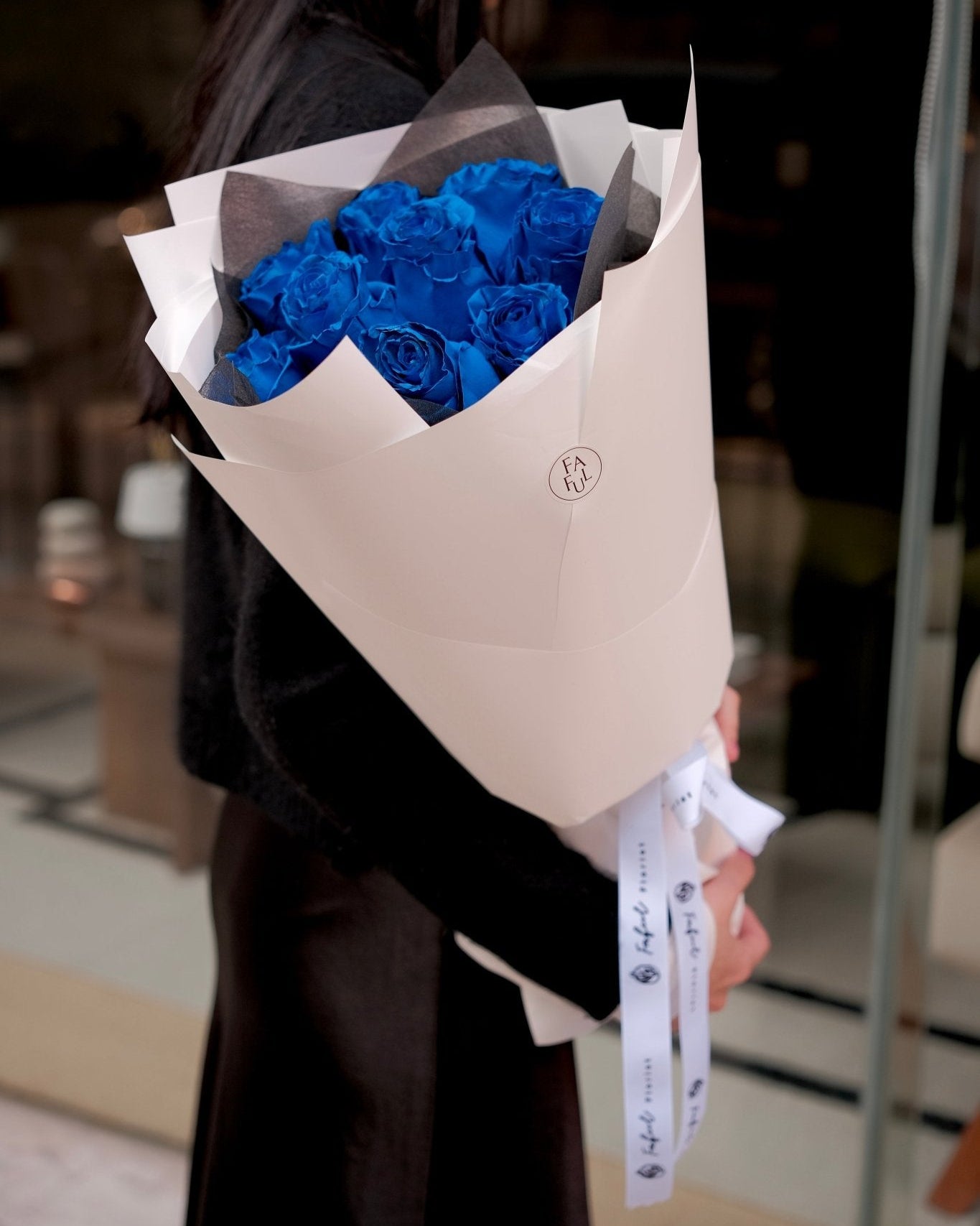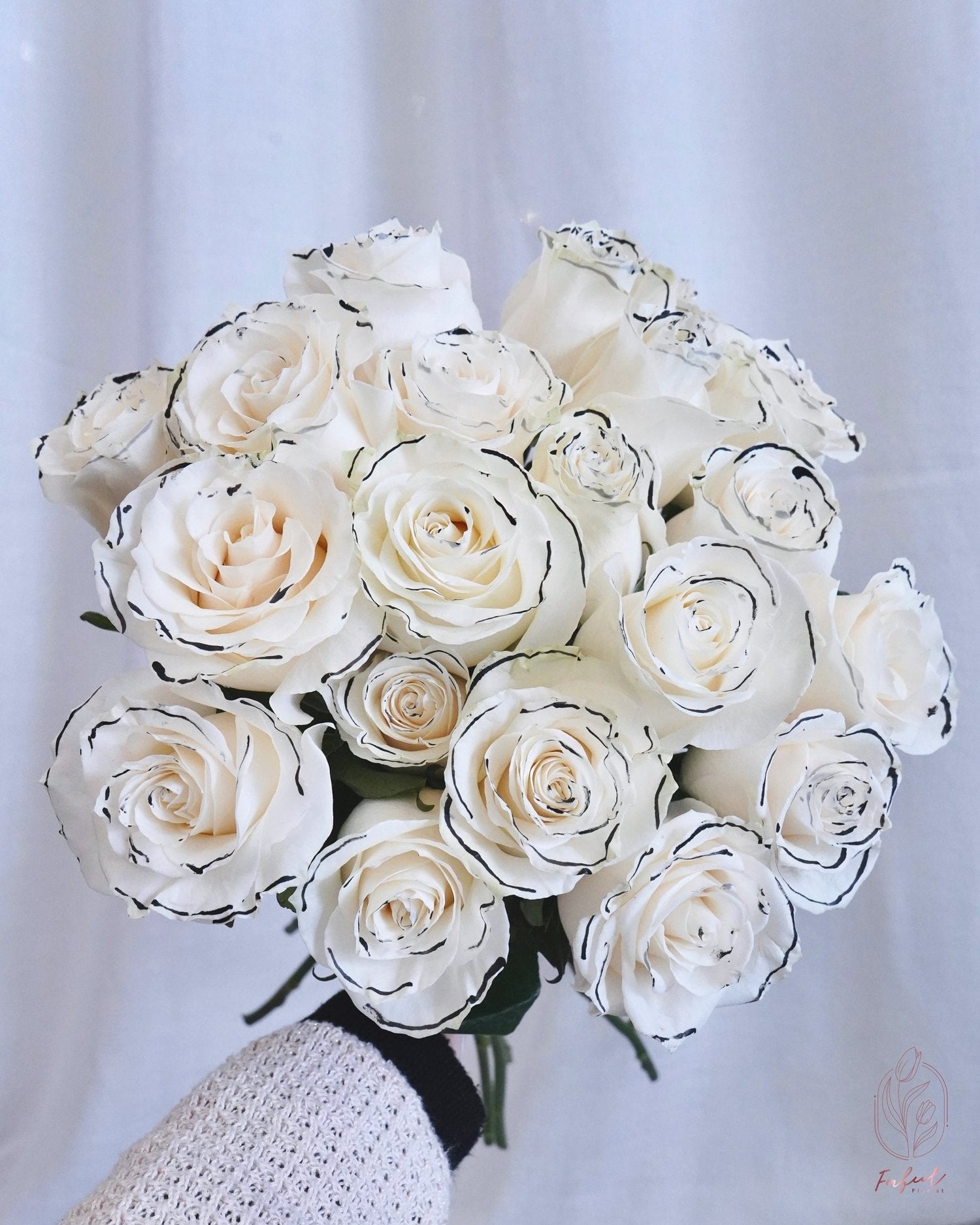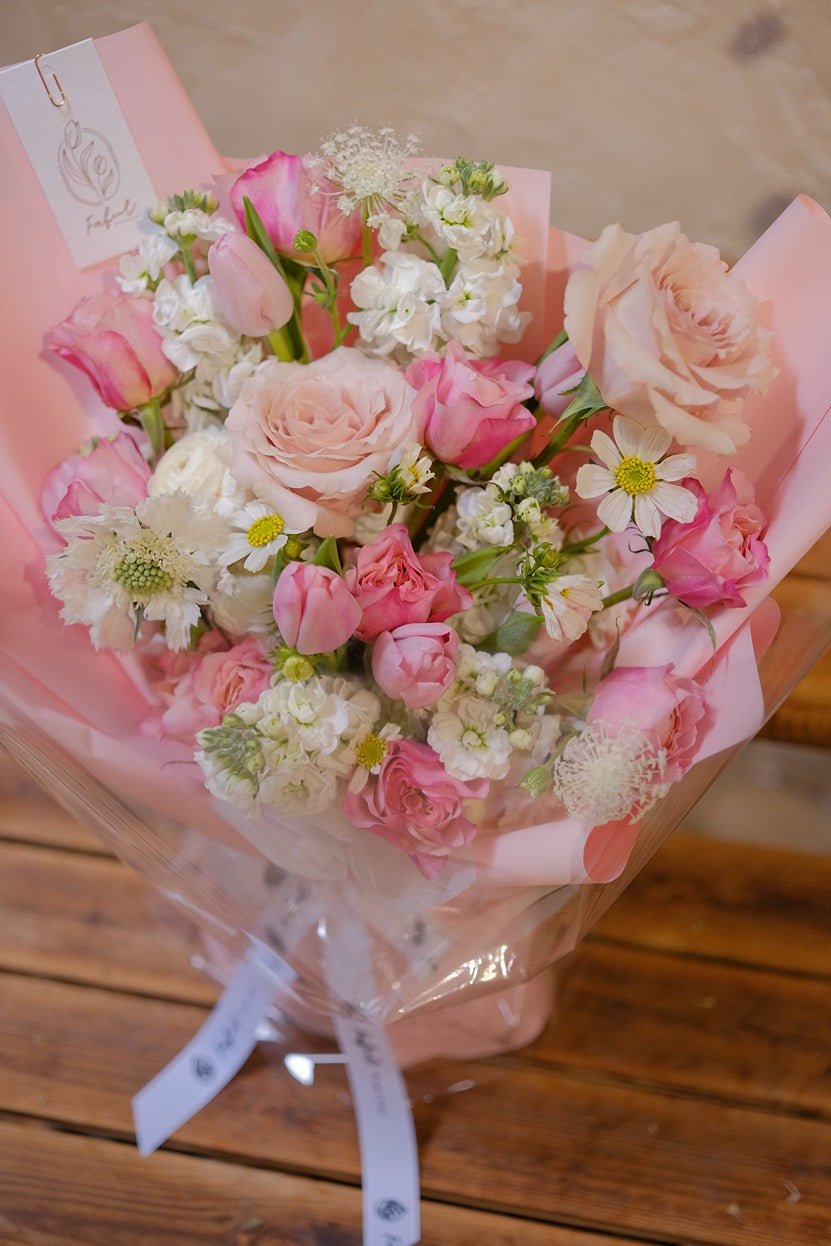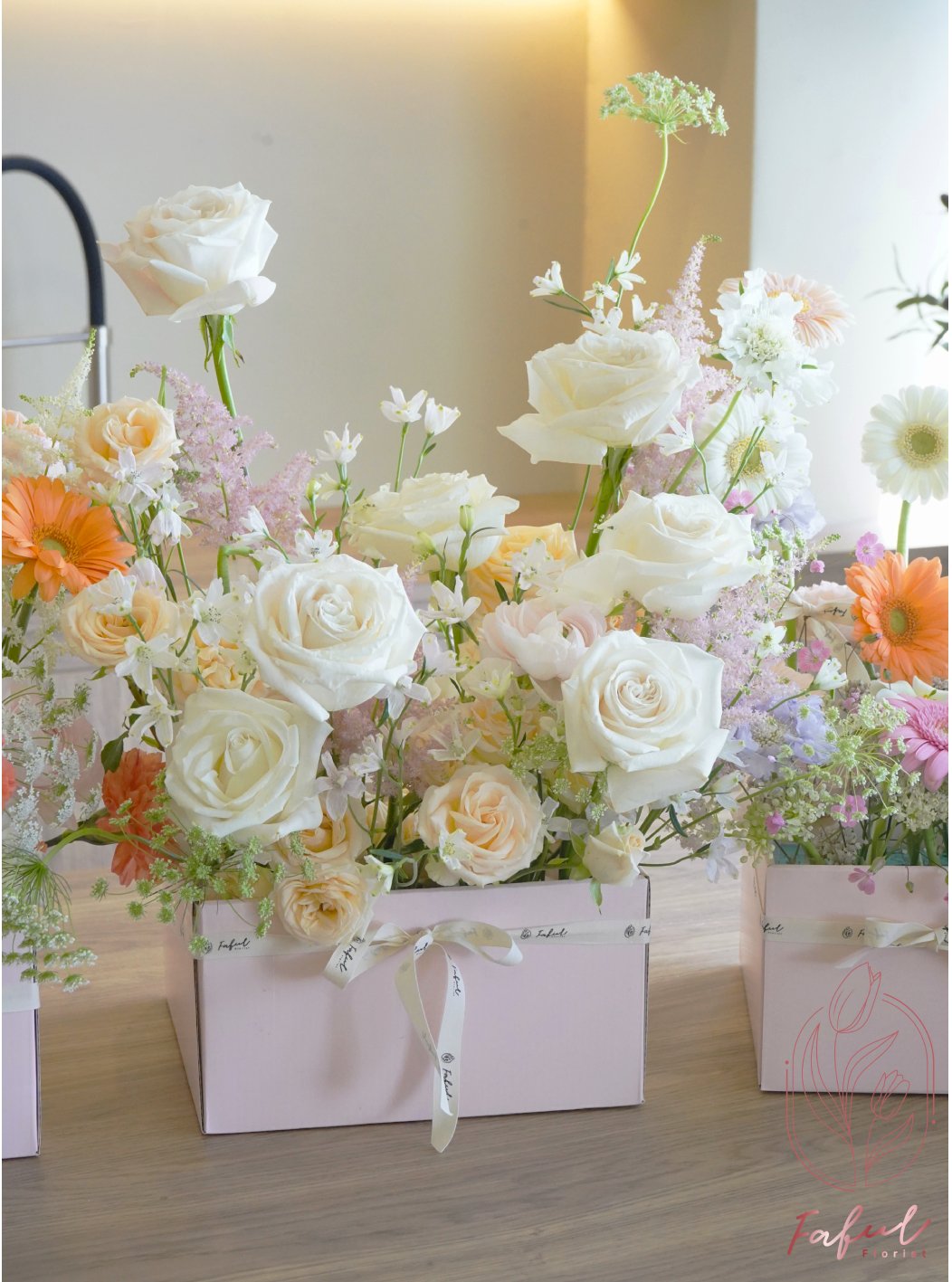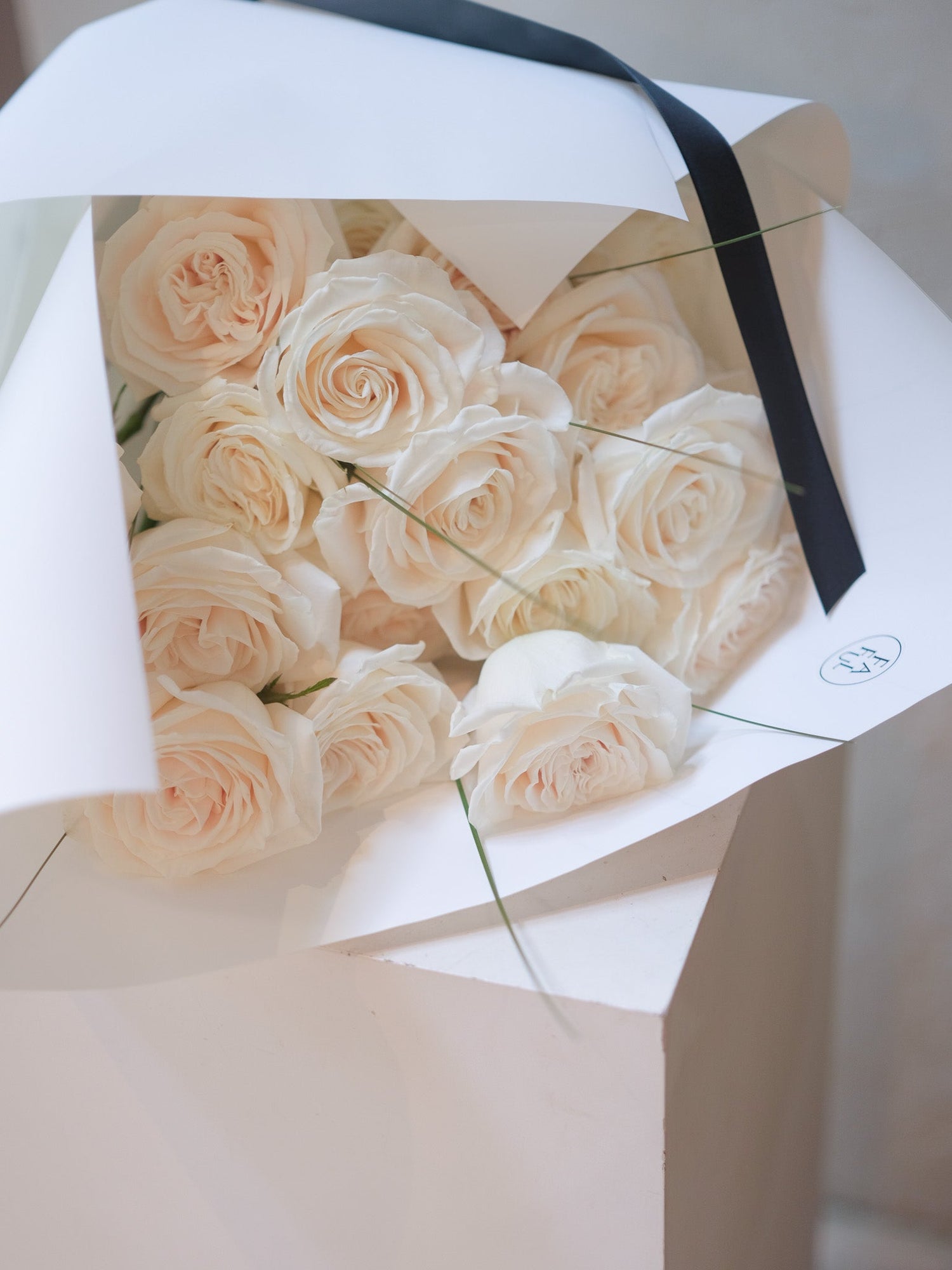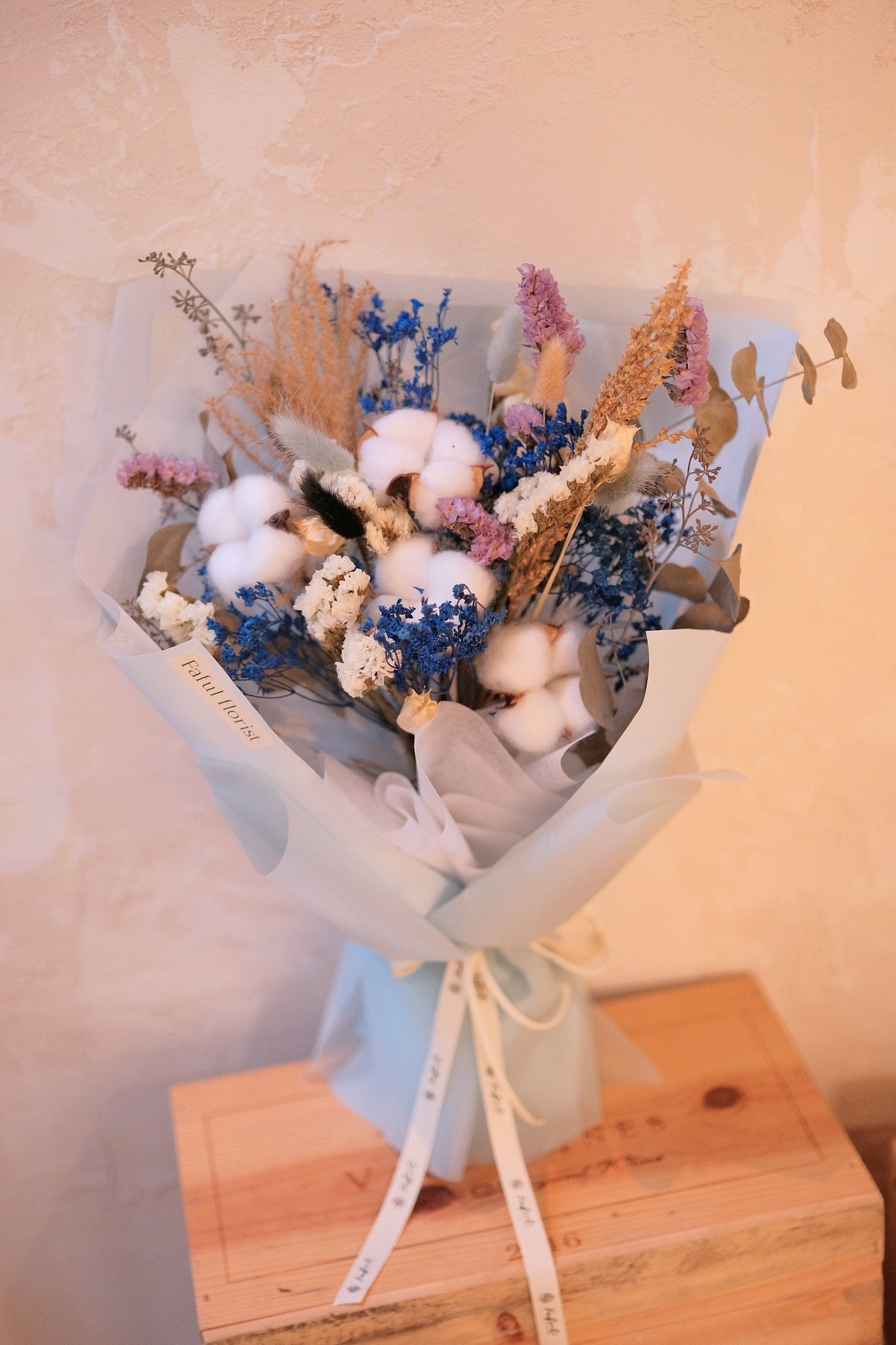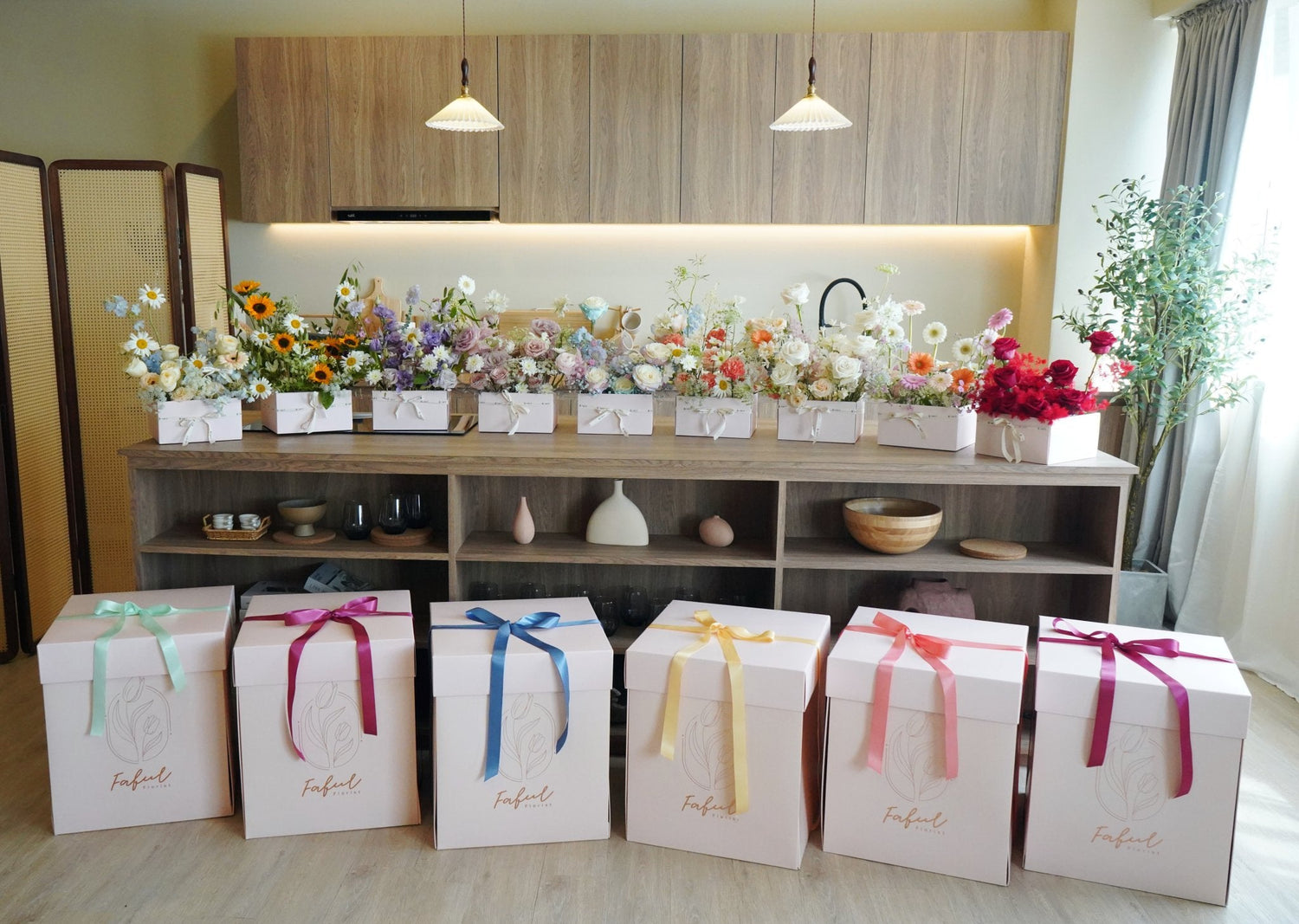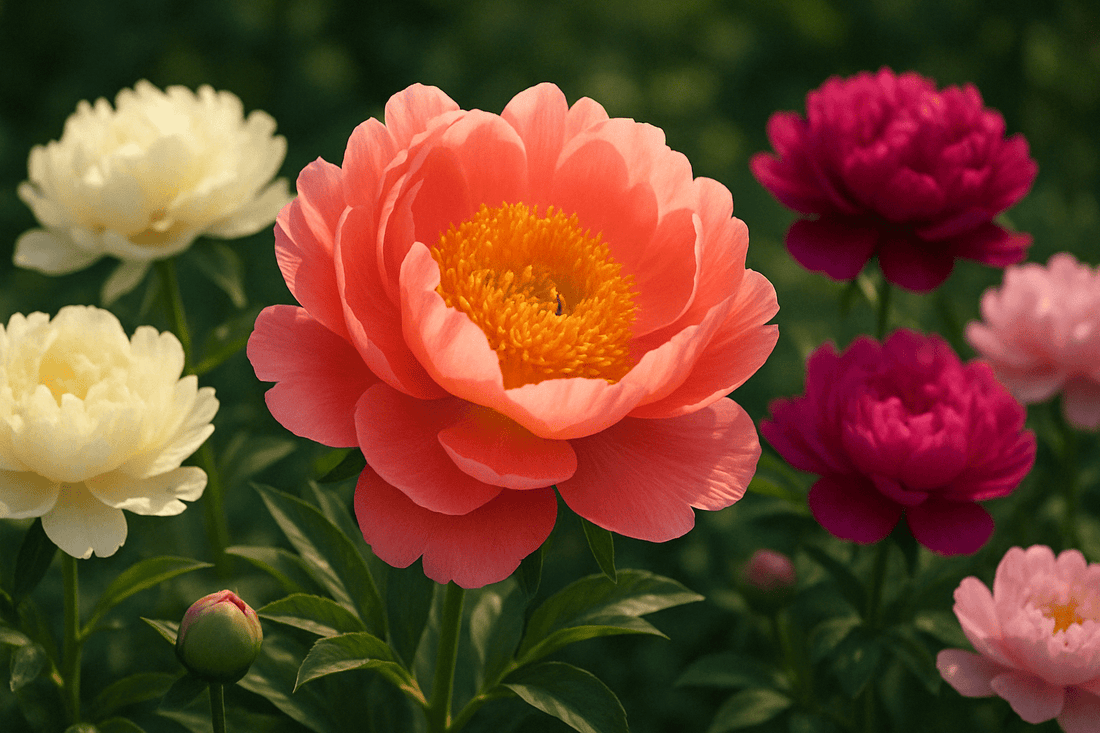
The Secret Peony Meaning: Decoding Symbols of Prosperity and Cultural Beauty
Estimated reading time: 6 minutes
Table of Contents
- 1. Origin and Basic Introduction of Peony Meaning
- 2. Analysis of Peony Meaning by Color
- 2.1 Red Peony Meaning: Wealth and Passionate Love
- 2.2 White Peony Meaning: Purity and Nobility
- 2.3 Pink Peony Meaning: Romance and Happiness
- 2.4 Yellow Peony Meaning: Precious Friendship
- 3. Symbolic Significance of Peony in Eastern and Western Cultures
- 3.1 "King of Flowers" in Traditional Chinese Culture
- 3.2 Symbolism of Botan in Japanese Culture
- 3.3 Victorian Era Meaning Interpretation
- 4. Peony Cultivation and Care Techniques
- 5. Image of Peony in Art and Literature
- 6. Contemporary Applications of Peony Meaning
1. Origin and Basic Introduction of Peony Meaning
1.1 Botanical Background of Peony
The peony belongs to the Paeoniaceae family and is a deciduous shrub native to temperate regions of China. Its scientific name originates from Paeon, the physician of the gods in Greek mythology. The plant has fleshy roots for storing nutrients, mature plants can reach 2 meters in height, and its leaves are pinnately compound with serrated notches. A waxy layer on the surface effectively reduces water evaporation, demonstrating strong vitality.
Flowers can reach 25 cm in diameter, with perianth segments divided into sepals and petals in two whorls, and carpels arranged in a ring. Horticulture classifies them into nine major flower types, such as single and double, based on the degree of pistil petaloidy. This unique floral structure is not only a basis for taxonomy but also inextricably linked to its cultural symbolic significance.
Peonies require 480-560 hours of low-temperature vernalization to differentiate flower buds, a physiological mechanism limiting their main distribution to latitudes 30-45°N. In subtropical regions like Taiwan, refrigeration technology is needed to simulate the vernalization environment. This cultivation characteristic reinforces its meaning of "unyielding integrity." From the survival wisdom of storing nutrients in fleshy roots to blooming large flowers despite environmental limitations, the peony's plant physiology provides a scientific annotation to its symbolism of "wealth and auspiciousness."
1.2 Historical Development of the Peony Meaning Concept
The historical roots of peony meaning are deeply embedded in ancient Chinese court culture. During the Tang Dynasty (618-907), its magnificent flower form earned it the reputation of "national beauty and heavenly fragrance," becoming an exclusive flower of the imperial family. Records like "Kaiyuan Tianbao Yi Shi" mention Emperor Xuanzong planting peonies extensively for Yang Guifei, establishing the symbolic meaning of "wealth and honor." During this period, peony meaning was already closely linked to power and status, becoming a hidden code of social hierarchy in Tang society.
In the Song Dynasty (960-1279), scholars systematically constructed the cultural meaning of the peony. Ouyang Xiu's "Record of Luoyang Peonies" positioned the peony as the "chief among hundred flowers," extending its meaning to "noble character" through poetry and painting. Literati also developed a color symbolism system; the interpretation of white peonies as "pure and flawless" took shape during this time, reflecting the refined aesthetic development of the Song Dynasty.
During the Ming and Qing Dynasties (1368-1912), the peony was integrated into the folk auspicious symbol system. Patterns combining "wealth and long spring" with scrolling motifs, symbolizing perpetual wealth, were common. At this stage, its meaning merged with popular culture, becoming a widely used decorative motif. After being introduced to the West by plant hunters like Robert Fortune in the 19th century, the peony was assigned different cultural interpretations like "compassion" and "bashfulness" in the Victorian Era language of flowers, forming a cross-regional dialogue between Eastern and Western meaning systems.

1.3 Special Status of Peony in Flower Meaning
In the popular language of flowers during the Victorian era, the peony, with its full bloom and rich colors, was given the dual meaning of "wealth and dignity" and "graceful commitment," becoming a classic symbol where Eastern and Western meaning systems converged. Compared to the direct passion of roses, peonies are better at conveying subtle emotions, giving them both blessing and emotional expression functions in ceremonial occasions.
In traditional Chinese culture, the core meaning of the peony revolves around prosperity, nobility, and auspiciousness. Tang Dynasty scholars even elevated it to the status of a national flower. In Japanese Ikebana, the peony (ボタン, botan) is interpreted as "awareness of wealth," emphasizing the spirit of cherishing beautiful things. Western Floriography derived the interpretation of "Bashful Glory" from the peony's short blooming period, implying a hidden humility beneath its noble posture, forming a unique contrast in cultural interpretation.
Modern research indicates that the complexity of peony meaning stems from its multi-layered petal structure, while color differences yield subtle connotations: pink peonies emphasize romantic opportunities, white peonies link to pure protection, and red peonies retain the strongest symbol of prosperous blessings. This cross-cultural symbolic extensibility allows it to maintain a high position in contemporary floral design, becoming a carrier of meaning with both traditional weight and modern adaptability.
Want to learn more about flower meanings? Further reading: Flower Meaning - The Hidden Symbolic Significance Behind Flowers | Choose the Right Flower for the Right Person
2. Analysis of Peony Meaning by Color
2.1 Red Peony Meaning: Wealth and Passionate Love
In Eastern culture, the peony has long been hailed as the "King of Flowers," with the red peony carrying a unique meaning due to its intense color. Focusing on the core "peony meaning," the red peony embodies the dual symbolism of "wealth" and "passionate love," a characteristic derived from historical context and cultural interpretation. Tang Dynasty courts decorated banquets with red peonies, establishing its status as the "flower of wealth"; its full petals and fiery color were likened by scholars to the "burning passion" of love, becoming a classic medium for conveying deep affection.
Analyzing traditional customs, red peonies are often used to celebrate flourishing businesses or new homes, taking the auspicious omen of "blooming wealth." The Qing Dynasty's "Qun Fang Pu" (Register of Fragrant Plants) explicitly states: "Peony, the flower of wealth," a meaning still deeply rooted in Chinese society today. On the other hand, there is also a folk custom of gifting red peonies to a desired partner; compared to the subtle elegance of roses, peonies appear more ardent and direct, suitable for expressing the steadfast sentiment of "devoting this life."
It's noteworthy that the dual meaning of red peonies has contextual flexibility: business occasions emphasize the image of wealth, while wedding decorations focus on the symbolism of love. This multiple interpretation of the cultural code has allowed it to endure in Eastern floristry. Works by modern floral artists like Daniel Ost also frequently incorporate red peonies with contemporary designs, showcasing the innovative interpretation of traditional symbols and further consolidating its cultural representativeness.
2.2 White Peony Meaning: Purity and Nobility
In the symbolic system of peony meaning, the white peony, with its pure and flawless quality, stands as the classic representative of "purity and nobility." Tang Dynasty courts regarded the white peony as a symbol of imperial honor; its layered petals like elegant satin, paired with green leaves, exuded an extraordinary charm. This flower was not only highly esteemed in the East but also became a cross-cultural symbol of elegance after being introduced into Western aristocratic gardens by 19th-century European horticulturist André Michaux.
From the perspective of meaning analysis, white peonies are commonly used in wedding decorations and important ceremonies, symbolizing the purity of love and the sanctity of commitment. The Ikenobo school of Japanese Ikebana excels at creating Zen spaces with white peonies, while in traditional Chinese painting, scholars often used its white characteristic to imply noble character. Modern floral designer Jeff Leatham also favors white peonies as the main flower for high-end banquets, highlighting the space's elegant texture.
The symbolic significance of the white peony has cross-cultural commonality. In Christian culture, its pure white petals are often associated with the purity of the Virgin Mary; Buddhist temples often plant white peonies to signify clarity of mind. This cultural resonance is key to the enduring freshness of peony meaning. Whether in Eastern gardens or Western modern floristry, the white peony always interprets eternal noble beauty with quiet elegance.

2.3 Pink Peony Meaning: Romance and Happiness
The pink peony has long been the personification of romantic sentiment. Its layered petals and soft color perfectly interpret the core meaning of love and fulfillment symbolized in "peony meaning." In Eastern culture, pink peonies are considered auspicious signs for marriage, often used as theme flowers for wedding occasions; Western floral designers like Paula Pryke also use them in modern wedding decorations, showcasing a cross-cultural common image of happiness.
From a botanical perspective, the blooming process of the peony (Paeonia suffruticosa) takes several weeks, aptly metaphorizing the patience required to nurture love. Japanese Ukiyo-e master Hokusai depicted pink peonies in his paintings, highlighting their vitality through gradient techniques; this artistic expression still influences the design language of brands like Tiffany & Co. today.
In horticultural applications, pink peonies are suitable for interplanting with David Austin roses to extend the flowering period. Soil pH should be maintained at 6.5-7.0 with ample sunlight; using the Hügelkultur cultivation method can improve drainage. The secret to preserving cut flowers lies in harvesting them in the early morning and immediately placing them in warm water containing Flower Food, which can extend the viewing period up to 10 days.
Modern meaning research shows that gifting 11 pink peonies represents "lifelong protection," while 9 signifies "long-lasting admiration." Through the numerical symbolism of Numerology, the traditional "peony meaning" continues to convey core emotional values in the digital age.
2.4 Yellow Peony Meaning: Precious Friendship
In the peony meaning system, the yellow peony is assigned the unique meaning of "precious friendship," clearly distinct from the love symbolized by red peonies and the elegance represented by white ones. Its bright color originates from the ancient Chinese tradition of scholars gifting them to each other, embodying the spirit of "a gentleman's friendship is as light as water." The fullness of the flower form further implies the richness of the bond, becoming a unique emotional code in Eastern culture.
Botanical research indicates that the Yellow Peony's rarity in nature, due to the yellow gene being a dominant inherited variation, corresponds aptly to the characteristic that true friendship requires long-term cultivation. Japanese horticulturist David P. Ehrhardt found in his cultivation research that the yellow peony's moderate sensitivity to soil pH and light conditions mirrors the need for careful balancing in interpersonal relationships.
Modern floral design utilizes the layered petal structure of the yellow peony: the outer bright yellow expresses warmth, while the inner gradient shades interpret deep understanding, perfectly embodying the multi-dimensional aspects of friendship. Professional designers suggest using simple compositions when pairing with baby's breath to avoid secondary flowers diluting the core meaning of "precious friendship."
From the "Yao Huang" variety recorded in the Song Dynasty's "Record of Luoyang Peonies" to contemporary social etiquette, the yellow peony has always carried the cultural image of sworn friendship.
3. Symbolic Significance of Peony in Eastern and Western Cultures
3.1 "King of Flowers" in Traditional Chinese Culture
In traditional Chinese culture, the peony has long enjoyed the reputation of "King of Flowers." Its magnificent and noble appearance, along with its rich symbolic meaning, became the focus of praise for scholars and artists throughout history. The cultural code carried by "peony meaning" is deeply integrated into rituals, art, and life philosophy.
The core meaning of the peony revolves around "wealth and auspiciousness," originating from its complex layered petals and full form when in bloom, seen as a tangible symbol of prosperity. The Tang Dynasty poet Liu Yuxi's poem "Admiring Peonies" states: "Only the peony possesses true national beauty; its blooming season moves the capital city," tightly linking the peony with the imagery of a prosperous era. Different colored peonies have further subtle meanings—crimson symbolizes ardent true feelings, snow white represents purity, and dark purple implies deep wisdom.
Peony meaning also permeates traditional ceremonies. From the twelve symbols embroidered on court robes to dowry patterns in folk weddings, peony motifs carry wishes for a good life. In contemporary cultural contexts, peony meaning retains the traditional blessing of "blooming wealth" while also deriving modern interpretations of "grace and composure," demonstrating the enduring vitality of traditional symbols adapting to the times.
3.2 Symbolism of Botan in Japanese Culture
In Japanese culture, the meaning of the peony (Botan) encompasses wealth, elegance, and auspiciousness. Introduced during the Heian period, the peony gradually integrated into aristocratic culture, frequently appearing in Ukiyo-e prints, lacquerware patterns, and Noh theater costumes. It symbolizes the Bushido spirit of "honor over life" and implies the philosophy of life's transient bloom.
Japanese Ikebana often uses the peony as the main material paired with bamboo branches, displaying the worldly wisdom of "balancing hardness and softness." It's noteworthy that regional differences also affect the peony's symbolic meaning. The Kansai region emphasizes wedding blessings of "good fortune," while the Kanto region focuses on the image of resilient "growth in adversity." This divergence stems from the aesthetic preferences of various daimyo (feudal lords) during the Edo period and still influences modern application scenarios.
Contemporary Japan continues peony cultural rituals, such as the "Peony Festival" at Hase-dera Temple in Nara, which combines Buddhist beliefs with flower viewing. In the commercial sector, department stores like Mitsukoshi use peony patterns in kimono designs, highlighting the elegant quality of "traditional beauty." Compared to the imperial imagery in Chinese culture, Japan focuses more on refining the aesthetic essence of "elegance without arrogance," forming a unique system of meaning interpretation.

3.3 Victorian Era Meaning Interpretation
In the Victorian era's language of flowers system, the Peony (Paeonia) was assigned unique symbolic meanings. Its magnificent appearance and short blooming period created a stark contrast, making it a medium for the upper class to convey hidden emotions. Contemporary florilegium works like "The Language of Flowers" recorded that the peony primarily carried the dual imagery of "wealth and dignity" and "bashfulness and reserve," subtly reflecting society's repression and desire for emotional expression.
White peonies symbolized a pure heart, often used in occasions praising women's noble virtues; deep red varieties implied restrained admiration, suitable for gentlemen to convey feelings discreetly in formal social settings. Notably, a peony bud was interpreted as "reserved consent," while a fully bloomed state carried a warning of "fleeting glory," a difference often reflected in proposal bouquet designs.
The Victorian period also developed elaborate "peony etiquette": a single peony represented sincere apology, three blooming together symbolized family legacy, and pairing with ivy leaves transformed the meaning into a vow of marital fidelity. These codes of meaning still influence modern floral design, especially in wedding bouquets, where the peony's classical imagery continues to convey timeless romantic sentiments.
4. Peony Cultivation and Care Techniques
4.1 Best Planting Season and Environment
Peony meaning carries connotations of wealth, auspiciousness, and elegance. Mastering the correct planting time and environmental conditions is the practical foundation for echoing this beautiful symbolism. In temperate regions, autumn (September to November) is the best planting season, as soil temperature favors root development. For planting in subtropical regions like Taiwan and Hong Kong, early winter (November to December) is recommended, with attention needed for shade regulation to control sunlight intensity and prevent plant damage.
Peonies have strict requirements for their growing environment. Well-drained sandy loam soil is needed, with a soil pH maintained in the neutral to slightly acidic range of 6.5-7.0. At least 6 hours of daily sunlight is necessary, while also avoiding strong wind areas to protect the branches. The characteristic of "disliking continuous cropping" is particularly emphasized; the same plot needs an interval of 3 years or more before replanting to avoid soil nutrient imbalance and pest problems. This point aptly corresponds to the deep meaning of "completeness" in peony meaning.
For container planting, breathable Terracotta pots are recommended. The medium can be mixed with Perlite and organic compost to improve structure. Whether ground-planted or potted, ensure the grafting point of grafted seedlings is buried about 5 cm into the soil during planting. This operation effectively stimulates new bud emergence, laying the foundation for subsequent flower bud differentiation. Through rigorous environmental control and planting techniques, the auspicious meaning carried by the peony can be fully realized.
4.2 Soil Selection and Fertilization Points
Peony growth status is inextricably linked to soil quality. The ideal cultivation medium needs to be loose and breathable. It is recommended to mix sandy loam with 30% organic compost and ensure the soil pH remains in the neutral to slightly acidic range of 6.5-7.0. When potting, Perlite or Vermiculite can be added to improve drainage and prevent root rot due to waterlogging during rainy seasons. This point is crucial for interpreting the auspicious meaning of "wealth and completeness" in peony meaning.
Fertilization timing should be adjusted according to the growth cycle: use high-nitrogen fertilizer during the spring budding stage to promote leaf development; switch to a high-phosphorus-potassium formula during the flower bud formation period, applying diluted liquid fertilizer every three weeks is recommended. Special care must be taken to avoid using uncomposted organic fertilizer; natural nutrient supplements like Compost Tea or Fish Emulsion can be chosen, which maintain soil activity and align with the noble and luxurious quality of the peony meaning.
Addressing the peony's aversion to continuous cropping, topsoil should be renewed annually. Bone Meal can be applied in autumn to supplement phosphorus, mixed with a small amount of wood ash to adjust pH. Applying fertilizer by top-dressing shallowly around the root system, combined with mulching techniques for moisture retention, can echo the imagery of "endless proliferation" in peony meaning. This section focuses on the connection between cultivation techniques and meaning, while other variety classifications and cultural symbols will be detailed in other sections.
4.3 Common Pest and Disease Control
Peony meaning carries auspicious connotations of wealth; plant health management is core to maintaining its symbolic significance. This section focuses on pest and disease control points. For Gray Mold (Botrytis cinerea), initial symptoms show brown patches on leaves; affected parts should be promptly pruned and sprayed with Chlorothalonil fungicide. Anthracnose (Colletotrichum spp.) is characterized by concentric ring patterns on leaf margins; Mancozeb can be applied during rainy seasons to control spread, noting distinction from fertilization timing mentioned elsewhere.
For pest management, Aphids and Spider mites cause leaf curling by sucking sap; weekly spraying of diluted Neem Oil on leaf undersides is recommended, alternating with Abamectin for severe infestations. Scale insects should be physically removed using 75% alcohol and a soft brush; tool disinfection protocols (detailed in pruning/care section) are not repeated here.
Daily maintenance requires ensuring ventilation and light penetration. Foliar application of potassium silicate can enhance cell resistance. Yellow sticky traps are suitable for monitoring pest density. The principle of isolating diseased plants is emphasized, avoiding overlap with content in the propagation techniques section. Through precise control measures, the peony can be protected to fully convey its inherent meaning.
5. Image of Peony in Art and Literature
5.1 Peony in Chinese Classical Painting
In Chinese classical painting, the peony became a favorite subject for artists from the Tang and Song dynasties onwards. Its magnificent and luxurious image and the reputation of "King of Flowers" resonated with the aesthetic pursuits of scholars and literati. The core meanings carried by "peony meaning," such as "wealth and auspiciousness" and "prosperity," became important symbolic icons for court painting and the scholar-official class.
Song dynasty court painters like Zhao Chang depicted peonies using meticulous brushwork and rich colors (gongbi), combining the texture of the petals with the imagery of "blooming wealth" through layered rendering techniques. Ming dynasty literati painters like Shen Zhou used varying shades of ink wash (shuimo xieyi) to interpret the peony's "national beauty and heavenly fragrance" charm. This creative form cleverly linked to the deeper connotation of "elegance and transcendence" within peony meaning.
Classical paintings often feature compositions of peonies with elements like Taihu rocks and peacocks. Such combinations not only present auspicious meanings like "wealth and longevity" but also imply the traditional philosophical thinking of "balancing hardness and softness." The painting techniques for peonies recorded in the Qing dynasty's "Mustard Seed Garden Manual of Painting" emphasized showcasing the "aura of a prosperous age" through petal layers, which is a concrete practice of peony meaning in artistic expression.
Painters throughout history interpreted peonies distinctively: Yuan dynasty's Wang Mian used ink peonies to convey literati integrity, while Qing dynasty's Giuseppe Castiglione (Lang Shining) integrated Western perspective techniques to highlight imperial grandeur. These diverse creations aptly reflect the multi-dimensional interpretations of peony meaning in different cultural contexts, becoming important points for analyzing the evolution of traditional Chinese aesthetics.
5.2 Depiction of Peony in Western Oil Painting
In the Western oil painting tradition, the dual metaphors of peony meaning are vividly expressed through artistic creation. The luxurious still life paintings of the 17th-century Dutch Golden Age interpreted the imagery of "wealth" through complex layering, while Impressionist painters used contrasts of light and shadow to allude to the quality of "life's brevity." This symbolism is closely linked to the peony's inherent meaning of "glory" and "abundance." Artists used impasto oil paint to build up the texture of the petals, subtly revealing the fragility of worldly splendor.
Claude Monet's "Peonies" series, created in his Giverny garden, captured the translucent quality of the petals with loose brushstrokes, echoing the meaning of "fleeting beauty." Symbolist painter Odilon Redon's "Vase of Peonies" used dark backgrounds to set off fluorescent flowers, enhancing the layered interpretation of "mystical spirituality" within peony meaning. Both demonstrate Western art's unique interpretation of meaning codes.
After the "Language of Flowers" system became popular in the 19th century Victorian era, the symbolic meaning of the peony became even more complex. Lawrence Alma-Tadema, in "The Roses of Heliogabalus," deliberately placed peonies at the edge of the frame, contrasting their full form with the decay of roses, implicitly suggesting the heavy price of "imperial love." This creative technique embodies Western art's characteristic of both adhering to tradition and innovatively transforming peony meaning.

5.3 Applications in Modern Floral Design
In modern floral design, the imagery of "wealth and auspiciousness" and "complete friendship" carried by peony meaning is widely used in three major scenarios: wedding decorations, commercial space displays, and art installations. Designers leverage its lush flower form and cultural depth, combining contemporary techniques to create emotional connections.
Wedding designs often pair peonies with herbaceous peonies (Paeonia lactiflora) to create a luxurious atmosphere with layered petals. A renowned florist used white peonies to interpret pure love at a five-star hotel wedding banquet in Taipei, pairing them with matte gold vessels for an understated luxury feel. Commercial spaces focus on the peony's symbolism of "prosperity." For example, a high-end shopping mall in Hong Kong used 3D printing technology in its spring window display to recreate the blooming posture of peonies, enhancing the brand's elegant image.
Innovations are also seen in digital art. The Japanese collective teamLab uses interactive projection technology, allowing peony petals to bloom and fade with audience movement, redefining the contemporary meaning of "blooming wealth." In color selection, pink peonies are suitable for conveying romantic feelings, while purple peonies can highlight a noble aura; designers often mix and match flexibly according to the theme.
Recent works at international events like the Chelsea Flower Show often feature peonies mixed with industrial materials like steel and acrylic. This juxtaposition of hard and soft echoes modern aesthetic trends. From peony headpieces worn by celebrities in public appearances to festive floral walls on landmark buildings, all attest to the cross-era design charm of peony meaning.
6. Contemporary Applications of Peony Meaning
6.1 Wedding Floral Design
Peony meaning, carrying connotations of "wealth and completeness" and "deep, unwavering love," makes it a core element symbolizing eternal commitment in wedding floristry. Whether using common Western Peony varieties like 'Sarah Bernhardt' and 'Duchesse de Nemours', or traditional Eastern Paeonia suffruticosa, their layered petals resonate with the abundant beauty sought in weddings. Designs must adhere closely to the spirit of peony meaning, avoiding overemphasis on varietal characteristics that might detract from the theme.
When used as the main flower, it's recommended to outline layers with linear materials like baby's breath or eucalyptus leaves, while reinforcing the meaning through color schemes: ivory white interprets pure vows, pink peonies sketch first love's flutter, and burgundy red suits vintage-style wedding banquets. Although professional preservation techniques can extend the flowering period, confirmation of supply timing with the florist is still necessary to ensure the flowers' blooming state matches the ceremony schedule.
Advanced designs can extend peony meaning into the visual system, such as using embossed patterns on invitation cards or decorations on cake toppers, allowing the symbolic imagery to permeate wedding details. Care must be taken to avoid repeating content from other sections, such as cultivation history or sourcing channels, focusing instead on the connection between cultural meaning and ritual sense, letting the blessings carried by the peony bloom eternally in its rich fragrance.
6.2 Commercial Space Displays
The essence of peony meaning—"wealth and completeness," "nobility and auspiciousness"—demonstrates unique value in business settings. Deep red and burgundy peonies strongly convey the imagery of business prosperity, while white varieties are suitable for occasions establishing trust, precisely meeting the needs of business etiquette. Placement should follow the "main visual focus" principle, ideally centered on conference tables or at reception entrances, fully leveraging the memorable impact of their large 15-20 cm diameter blooms.
Vase selection needs to harmonize with the space's style: celadon porcelain enhances cultural depth, while metal materials suit modern office environments; remember to avoid elaborate decorations to maintain professionalism. According to international etiquette expert Emily Post's research, peonies have high acceptance in cross-cultural communication. Their vase life management also implies business wisdom—maintaining clean water and an 18-22°C room temperature can extend the blooming state to 5-7 days. Pairing with evergreen plants simultaneously symbolizes the corporate philosophy of sustainable development.
Special attention must be paid to applying peony meaning focused on "creating spatial atmosphere," avoiding excessive extension into areas like gifting taboos or cultivation techniques (which will be detailed in other sections). Color selection should also align with corporate image; for example, the financial industry favors darker shades to emphasize stability, while creative industries can moderately incorporate pastel peonies to add dynamism.

6.3 Festive Gifting Guide
Hailed as the "King of Flowers" since ancient times, the peony's magnificent appearance and deep cultural meaning make it a classic choice for festive gifting. Mastering "peony meaning" allows gifts to better suit the occasion—its symbolism of wealth, auspiciousness, completeness, and prosperity is particularly suitable for celebrations like Lunar New Year and business openings. Tang Dynasty poet Liu Yuxi praised its splendor with "Only the peony possesses true national beauty," and it remains a representative of noble etiquette in Chinese culture today.
Depending on flower form and color variations, the emotions conveyed by peonies also differ: traditional large red peonies are suitable for gifting to elders or business partners, implying great fortune; pastel shades carry an elegant romantic air, often used for Mother's Day or wedding blessings. Combining peonies with orchids, asparagus fern, etc., using Eastern flower arrangement art, can further highlight the recipient's esteemed status.
Modern gifting trends emphasize "customized meaning expression." Special varieties can be chosen according to the occasion. For example, the Peony Rose bred by England's David Austin, combining a full flower form with a long vase life, is suitable for anniversaries; the goose-yellow petals of Japan's Itoh Peony can convey sincere blessings.
Note that the peak blooming period for peonies is concentrated in late spring and early summer. If gifting in other seasons, preserved flower crafts or high-resolution digital paintings can be chosen, retaining the meaning while overcoming seasonal limitations. Through skillful use of peony symbolism, festive gifts can transcend material value, becoming unique carriers of emotion.
If you are captivated by the meaning of peonies, we invite you to continue browsing our flower shop and explore a whole new world of flowers!

